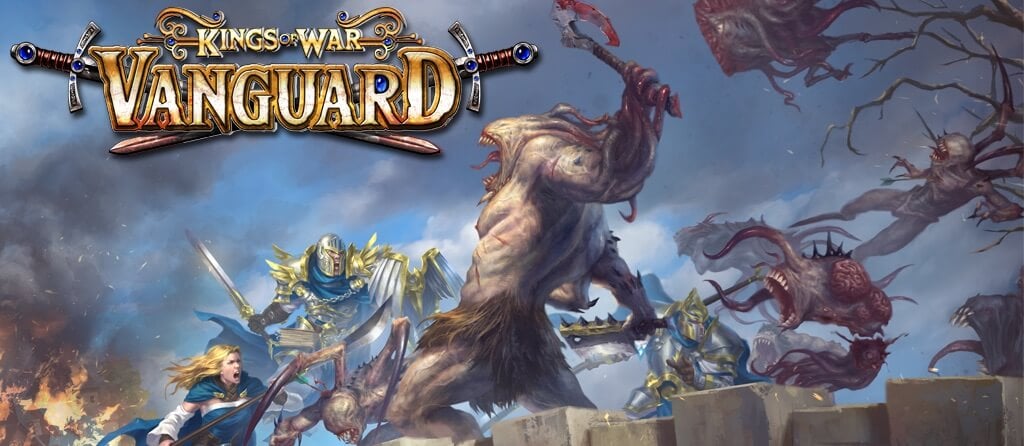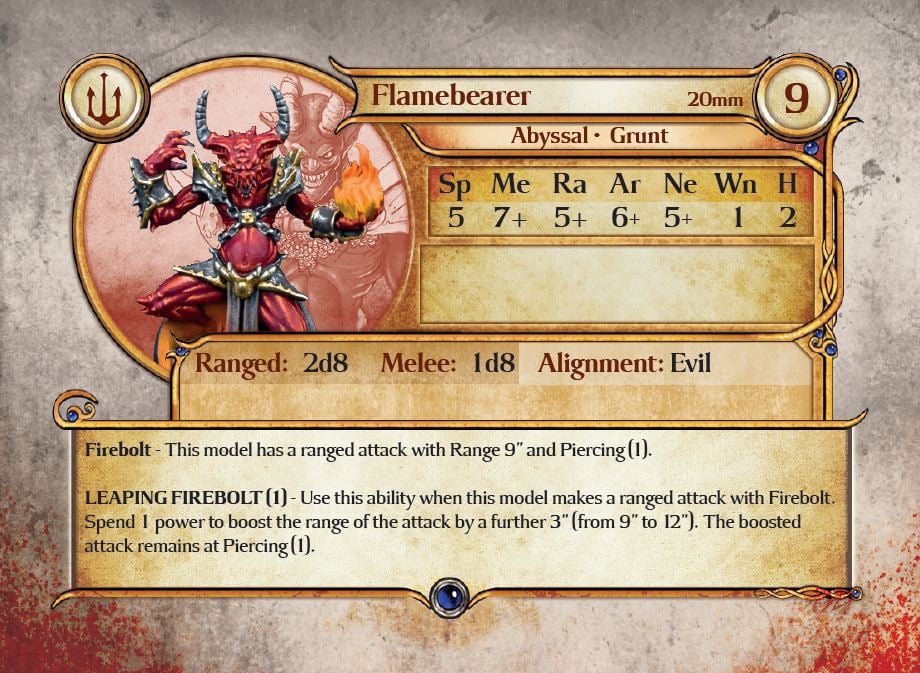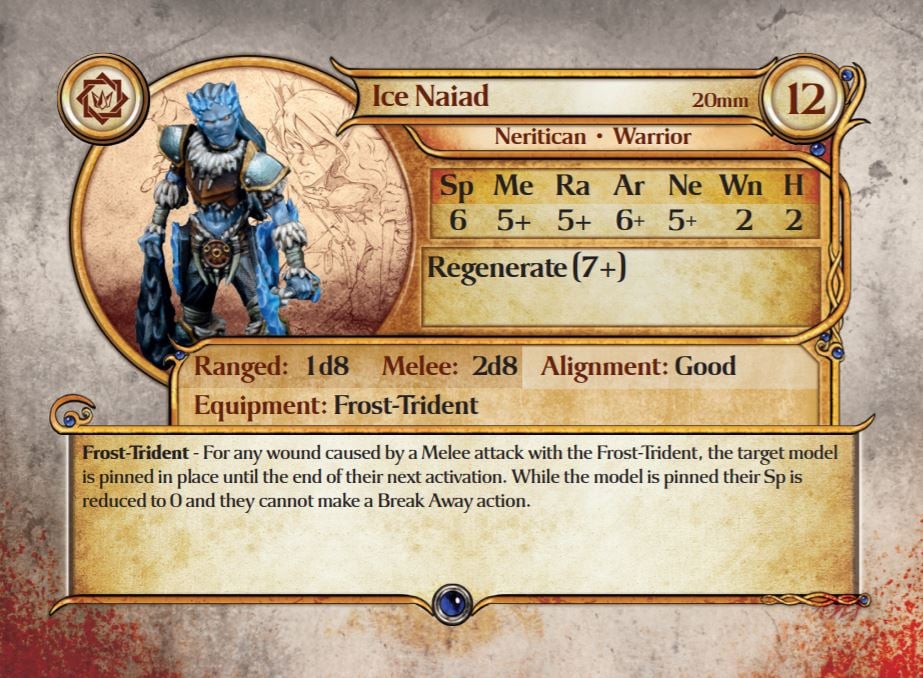Kings of War: Vanguard – Combat Basics
1st Jul 2020
Rob Burman

Hi again! It’s your friendly neighbourhood Vanguard rules 'expert' here with another blog detailing the ins and outs of everyone's favourite fantasy skirmish game, Kings of War: Vanguard. Across the next couple of blogs we’re going to be talking about combat. This means we’ll have pretty much covered all the basics and next week we can start looking at some of the more advanced elements, like campaigns, the spellbook and the ties with Kings of War. So far we have covered:
- The basics of Vanguard
- How to Build a Warband
- What are Power Dice?
- What are Group Actions?
- What is Fatigue?
Now the focus is on combat! Unlike Kings of War, Vanguard uses D8s for standard tests. The reason for this is that you’ll typically be rolling less dice than you would in Kings of War, but the D8 keeps us a little more scope to create a range of weak, average and powerful characters. Think of it a little like future proofing the game, so we’re able to create new units with a range of stats in the future. Also D8 are cool! Just ask any self-respecting Deadzone player.

If we look at an example stat card again, you’ll see that underneath all the various stats for wounds, movement, etc. there’s a line showing ranged and melee. As you might have guessed, the number before the D8 tells you how many dice you have to roll in combat. In this case, the Flamebearer rolls 2 D8s when making a ranged attack and 1 D8 when making a close combat attack.
After you’ve checked how many dice you need to roll, it’s then a case of consulting either the Ra or Me stat. Going back to our little fiery friend, the Flamebearer needs to roll 5+ for a ranged attack or 7+ for a melee attack. Each success will then count as a hit. However, there’s always the chance to do a little extra damage because Vanguard has an exploding 8s mechanic. Each time you roll an 8, not only does it count as a success, but it also allows you to roll an extra dice. As a result, once you board the Eight Train, even the lowest Grunt has the capability of taking down a stronger unit. Choo, choooooo – all abbbbbbbbboard!
If you’ve played Deadzone or DreadBall, you’ll be familiar with this exploding dice mechanic. We absolutely love the system because it creates some very cinematic moments when – against all odds – the dice just keep exploding and suddenly an attack has a bucket load of hits. Or you make an incredible armour save when really your warrior should have been a smear of bloody paste on the battlefield.
‘TIS BUT A SCRATCH
Once you’ve hit the target, it’s time for the defending player to try and keep their model alive. The owner of the target model then rolls 1 die for each hit scored. Going back to our Flamebearer, let’s say he scored two hits in a melee attack (thanks to a lucky exploding 8) against the Ice Naiad below.

With two hits from the Flamebearer, that means the Ice Naiad needs to roll two dice. Each roll that equals or betters the Ice Naiad’s Ar stat of 6+ counts as a save. So, if the Ice Naiad rolled a 6 and a 2, that would mean she has blocked one attack, but the other hit gets through and causes one wound. Exploding 8s are also in effect when making an armour check too.
Of course, just like Kings of War, there are modifiers for particularly powerful units. If a unit has Piercing (n) or Crushing Strength (n), this increases the target model’s Ar stat. For example, instead of a melee attack, the Flamebearer opts for a ranged Firebolt, which has Piercing (1) and scores two hits again… lucky old Flamebearer. Now the Ice Naiad needs to score 7+ in order to block the shot. Unfortunately, the Ice Naiad rolls 5 and 4, which causes two wounds. With only two wounds as standard, that means the Ice Naiad is dead… or is she!?! DRAMATIC PLOT TWIST!
IT’S NOT OVER ‘TIL THE ICE NAIAD SINGS
In Vanguard, when you’re reduced to zero wounds, it doesn’t necessarily mean a model is instantly killed. You see, unless you’re a Grunt – which are removed from the table instantly – a model on zero or fewer wounds must take a Nerve test. The reason for it being ‘fewer wounds’ is that if the model has taken more wounds than it had remaining, the difference is used to modify the model’s Nerve stat. If the Nerve test is passed, the model survives with 1 wound remaining but is marked as fatigued (if not already) and is Knocked-down. If the Nerve test is failed, the model is removed from play.
Going back to our epic battle between the Flamebearer and the Ice Naiad, our chilly chum has been reduced to zero wounds. However, because she’s a Warrior, she’s not immediately removed from the table – instead we need to check her Nerve. She needs to score 5+ on a D8 to stay alive. The Ice Naiad grabs a die and *drum roll please* scores a 6. HOORAY! The Ice Naiad lives to fight another day, or until she gets stomped by a Despoiler.
The reason for including this last gasp mechanic is that we’ve all had that terrible moment when a favourite commander or wizard gets taken out by a rogue arrow or lucky blow from a plucky goblin. This is particularly galling in a campaign when you’ve been building up a character’s XP and they’re taken out turn one. With the Down But Not Out rule, it gives them a second chance to recover and make it back to safety.
In our next blog, we’ll look at some other elements of combat, including the option to Retaliate and the benefits from being near terrain.

 GBP
GBP  EUR
EUR  USD
USD